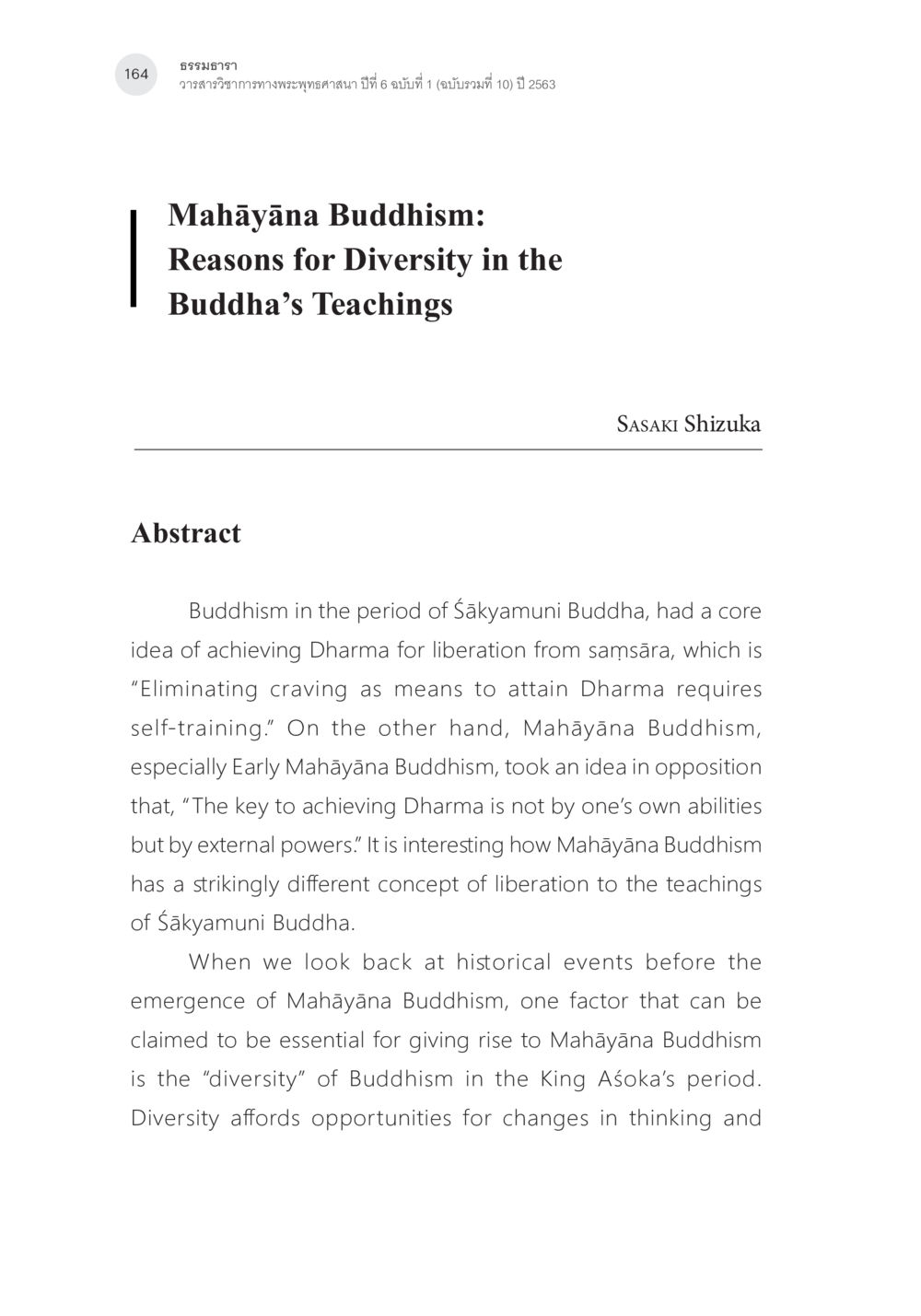การวิเคราะห์วิถีทางพระพุทธศาสนา : หน้า 5/38
พระพุทธศาสนามหายาน: เหตุใดคำสอนของพระพุทธเจ้าจึงมีความหลากหลาย (1) : หน้า 5/38 การศึกษาและวิเคราะห์แนวทางพระพุทธศาสนาที่เกิดขึ้นในช่วงเวลาต่างๆ โดยเฉพาะอภิปรัชญาของพระพุทธเจ้าและมหายาน
1 ครั้ง

สรุปเนื้อหา
บทความนี้วิเคราะห์ความแตกต่างของแนวคิดในพระพุทธศาสนา โดยมุ่งเน้นที่พระพุทธศาสนามหายานที่มีความคิดชนิดหนึ่งที่ต่างออกไปจากคำสอนของพระโสดาบัน โดยอ้างอิงถึงเหตุการณ์ในสมัยพระเจ้าอโศก ซึ่งเป็นช่วงเวลาที่เกิดความหลากหลายทางความคิดในศาสนาพุทธ การเข้าใจถึงความหลากหลายนั้นมีความสำคัญเพราะมันช่วยเปิดโอกาสในการเปลี่ยนแปลงความคิดและการปฏิบัติในศาสนาพุทธ
หัวข้อประเด็น
-การศึกษาและวิเคราะห์พระพุทธศาสนา
-ความหลากหลายของแนวคิด
-การหลุดพ้นในพระพุทธศาสนา
ข้อความต้นฉบับในหน้า
164
ธรรมาธรรม
วิเคราะห์วิถีทางพระพุทธศาสนา ปีที่ 6 ฉบับที่ 1 (ฉบับรวมที่ 10) ปี 2563
Mahāyāna Buddhism:
Reasons for Diversity in the Buddha’s Teachings
SASAKI Shizuka
Abstract
Buddhism in the period of Śākyamuni Buddha, had a core idea of achieving Dharma for liberation from saṃsāra, which is “Eliminating craving as means to attain Dharma requires self-training.” On the other hand, Mahāyāna Buddhism, especially Early Mahāyāna Buddhism, took an idea in opposition that, “The key to achieving Dharma is not by one’s own abilities but by external powers.” It is interesting how Mahāyāna Buddhism has a strikingly different concept of liberation to the teachings of Śākyamuni Buddha. When we look back at historical events before the emergence of Mahāyāna Buddhism, one factor that can be claimed to be essential for giving rise to Mahāyāna Buddhism is the “diversity” of Buddhism in the King Aśoka’s period. Diversity affords opportunities for changes in thinking and
หนังสือที่เกี่ยวข้อง
Load More






































